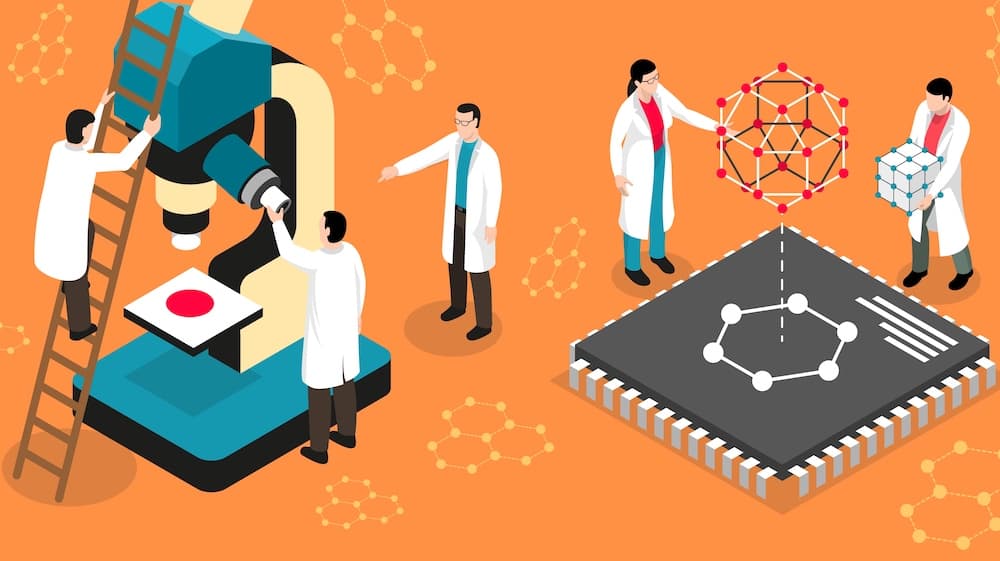
Endomag CEO Eric Mayes on the past and future of nanotechnology in cancer care.
What comes to mind when you hear the word ‘nanotechnology’? For many, the term conjures up fantasies stemming from science-fiction, with dreams of injecting tiny machines into our bloodstream to ward off disease.
The idea of using nanorobots to protect against infectious pathogens or to pick away at arterial plaque is certainly an exciting idea, but the reality of using such inventions clinically is still far from the horizon.
Nevertheless, nanomedicine today is just as exciting, and over the last several decades we have made great strides in what we can achieve with this diverse range of tiny materials, just 1 to 100 nanometres in size.
Bold aspirations for the future of nanotechnology are being fostered in nanomedicine today.
Through nanotechnology, we aim to design treatments that are targeted for therapeutic benefit, minimally invasive, and easily controllable. 25 years ago, the first clinically approved nanomedicine was made available. Using a nanocarrier known as a liposome, the chemotherapy medication doxorubicin could be preferentially delivered to cancer cells.
The liposome, composed of small fatty-acid molecules, self-assembles to form a protective capsule which helps the drug to reach the tumour.
Delivery of this drug to its tumour destination is supported by the enhanced permeability and retention (EPR) effect.
The EPR effect exploits a weakness of tumour blood vessels, similar to a leaky garden hosepipe.
Oxygen and nutrients are supplied to the tumour by blood vessels but, unlike elsewhere in the body, these rapidly produced tumour vessels contain many small perforations that allow small nanomaterials to escape.
Just as a punctured garden hose lets out water, these vessels allow nanoparticles to more easily reach a tumour.
Through this effect, non-cancerous tissue such as in the heart and gastrointestinal tract can be spared harmful drug exposure, as they have fully intact vessels.
The EPR effect presented researchers with a promising mechanism by which nanomaterials could target chemotherapeutics to tumours.
Unfortunately, EPR has not proven to be the silver bullet cancer intervention some had hoped for, as variations across different cancer types and patients has prevented its viability as a widespread drug delivery mechanism.
The successes and failures of the EPR effect show that more research must be conducted at a fundamental level, in order to better understand the interactions between nanomaterials and biological tissues, as well as the unique features of the tumour microenvironment.
The use of nanotechnology in cancer care is not just limited to medicines. Nanomaterials may also be applied to the imaging of cell structures and even used in diagnostics for staging cancer.
The Magtrace lymphatic tracer is a suspension of iron oxide nanoparticles used to assess the spread of cancer to lymph nodes, such as in patients with breast cancer. It is also the world’s first widely licensed injectable medical device consisting of nanoparticles.
Upon injection into the breast, Magtrace follows the same route of migrating cancer cells to lymph nodes underneath the armpit. Surgeons can then detect the Magtrace signal using a metal detector-like probe and remove suspicious lymph nodes, which are then analysed for secondary cancer.
While nanomedicines have become more established in the last quarter century, newer nanodevices such as the Magtrace lymphatic tracer have faced novel regulatory hurdles.
As a world-first, there was contention over whether the product should be deemed a medicine or a medical device during its clinical approval by the Food and Drug Administration (FDA). This came as a result of unique properties where nanomaterials can exhibit both drug-like and device-like qualities.
The eventual FDA approval for Magtrace in 2018 was made possible through collaboration between two branches of the FDA – the Center for Devices and Radiological Health, and the Center for Drug Evaluation and Research.
As nanotechnology is still a relatively new but promising field, it is clear that the regulatory process must be agile when assessing future nanodevices and nanomedicines.
Just like the unique properties that this range of nanomaterials provide, they will require unique working methods by regulatory bodies to ensure their safe and timely approval.
Such challenges will persist as we continue to push the boundaries of what nanotechnology can achieve. Liposomes can be regarded as a simpler form of nanocarrier, so what happens when we want to incorporate additional complexity to improve functionality and effectiveness?
This is a question that has been of great interest to researchers. Optimising routes of administration, targeting specific tissues and controlling drug release through exposure to specific stimuli are just some ways in which nanomedicines and devices may be improved.
Cancer represents a complex array of different diseases, which unfortunately cannot all be treated using the same methods.
For cancers that have not spread to other parts of the body, there is the potential to treat them through local administration. Injecting a suitable nanomedicine directly at the site of the tumour may maintain therapeutic levels for longer and reduce the chance of side effects to healthy tissue.
Rather than novel administration, specific targeting through antibody or other peptides could improve the retention of drug at the tumour site. This could be further enhanced through directed drug release or tumour damage using radio-, light- and magnetic-sensitive materials.
Naturally, ionising radiation can cause unwanted damage to cells. Visible light, whilst avoiding the more damaging effects of ionising radiation, can only penetrate the skin to a certain depth and so is not viable throughout the whole body.
Exploiting magnetic properties for new treatment candidates, however, may be a promising alternative. Magnetic fields do not damage tissue like radiation and can easily pass throughout the body. Approved products like Magtrace show that certain magnetic substances can be well tolerated in patients with minimal side effects.
Using such nanomaterials in conjunction with externally controlled magnetic fields is one promising rote to enhance nanomedicine functionality.
In an increasingly multidisciplinary research and clinical landscape, repurposing approved nanomaterials may just be the future of getting more complex nanomedicines and nanodevices to patients.
We have only scratched the surface of what is possible with nanotechnology in cancer care.
The achievements in nanomedicine over the past three decades give us hope, as we continue to learn and apply these technologies to existing medical challenges.
At a fundamental level, there is still much more research to be done.
We must better understand how nanoparticles interact with cancer, healthy organs, and the systems through which the body removes them.
With a deeper understanding of these concepts we may be able to optimise nanomaterial design to deliver even more effective cancer treatments with less harmful side effects.
If the positive future of nanotechnology painted by science-fiction is to be made a reality, like the nanorobots themselves, we cannot run before we can walk.





